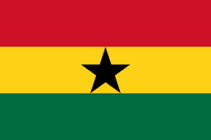Ghana was possessed in the Middle Ages and the Age of Discovery by various old overwhelmingly Akan realms in the Southern and Central regions. This incorporated the Ashanti Empire, the Akwamu, the Bonoman, the Denkyira, and the Mankessim Kingdom.
From the thirteenth century, Akans rose out of what is acceptable to have been the Bonoman region, to make a few Akan territories of Ghana, predominantly dependent on gold trading.[27] These states included Bonoman (Brong-Ahafo Region), (Ashanti Region), Denkyira (Western North district), Mankessim Kingdom (Central locale), and Akwamu (Eastern region). By the nineteenth century, the region of the southern piece of Ghana was remembered for the Kingdom of Ashanti, Repatriation To Ghana quite possibly the most persuasive states in sub-Saharan Africa before the beginning of colonialism.
About its Public Authority :

The public authority of the Ashanti Empire worked first as a free organization, and at last as an incorporated realm with a high level, exceptionally particular administration focused in the capital city of Kumasi. Before Akan contact with Europeans, the Akan public made a high-level economy dependent on basically gold and gold bar products at that point exchanged with the provinces of Africa.
More than thirty strongholds and palaces were worked by the Portuguese, Swedish, Dano-Norwegians, Dutch and German traders; the last Germans building up the German Gold Coast (Brandenburger Gold Coast or GroßFriedrichsburg) In 1874 Great Britain set up command over certain pieces of the nation, allocating these regions the situation with British Gold Coast. Much military commitment happened between the British frontier powers and the different Akan country states. The Akan Kingdom of Ashanti crushed the British a couple of times in the 100-year-long Anglo-Ashanti wars yet at last lost with the War of the Golden Stool in the mid-1900s.
Festivities denoting Ghana’s autonomy on 6 March 1957
In 1947, the recently framed United Gold Coast Convention (UGCC) drove by “The Big Six” called for “self-government inside the briefest conceivable time” following the Gold Coast authoritative political race, 1946. Kwame Nkrumah, a Ghanaian patriot who drove Ghana from 1957 to 1966 as the nation’s first Prime Minister and President, shaped the Convention People’s Party (CPP) in 1949 with the witticism “self-government now”.The gathering started a “positive activity” crusade including peaceful fights, hits, and non-collaboration with the British specialists. Nkrumah was captured and condemned to one year of detainment during this time. In the Gold Coast’s February 1951 general political decision, he was chosen for Parliament and delivered from jail to become head of government business. He improved the foundation of the country and his Africanisation strategies set out better vocation open doors for Ghanaians.
History of Ghana (1966–79) :
The public authority of Nkrumah was thusly toppled by an upset by the Ghana Armed Forces codenamed “Activity Cold Chop”. This happened while Nkrumah was abroad with Zhou Enlai in the People’s Republic of China, on an unprofitable mission to Hanoi in Vietnam to help end the Vietnam War. The overthrow occurred on 24 February 1966, drove by Col. Emmanuel KwasiKotoka. The National Liberation Council (NLC) was framed, led by Lt. General Joseph A.
